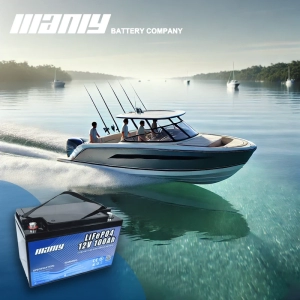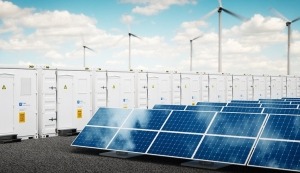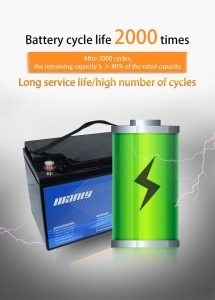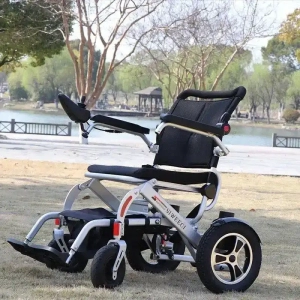¿Cuántas baterías de litio para alimentar un inversor de 5 KW?
Tabla de contenido
- ¿Cuántas baterías de litio para alimentar un inversor de 5 KW?
- Papel de las baterías de litio en los sistemas de energía solar
- Cómo calcular la cantidad de baterías de litio necesarias
- Factores que afectan el uso de la batería
- Configuración del banco de baterías para un inversor de 5 KW
- Ventajas de las baterías de litio para sistemas solares
- ¿Cuántas baterías solares necesito para 12 horas de energía (inversor de 5000 W)?
- Conclusión
- Más información sobre la batería
- Batería de ácido de plomo frente a litio: ¿Qué ofrece una mejor duración de la batería?
- Norwegian Equinor acquires 45% of Norker Power, a British battery energy storage developer
- Lithium Iron Phosphate Batteries’ Resurgence: A Phoenix-like Return
- Selecting the Best Batteries for Electric Wheelchairs: A Practical Guide

Papel de las baterías de litio en los sistemas de energía solar
In a solar power setup, the lithium batteries act as the intermediary between the solar panels and the home’s electrical system. During the day, when the sun is shining, solar panels generate electricity, but energy demand is often higher in the evening when sunlight is no longer available. The batteries store the energy generated during the day for use at night. Lithium batteries are ideal for this purpose because they have a high energy density, meaning they can store more power in a smaller space compared to traditional lead-acid batteries.Cómo calcular la cantidad de baterías de litio necesarias
To determine how many lithium batteries are needed for a 5kw inverter, you must first understand the relationship between power (watts), voltage (volts), and current (amps). The power formula is: Vatios = Voltios × AmperiosPor ejemplo, un inversor de 5000 W que funciona en un sistema de 48 V requiere aproximadamente 104 amperios (5000 vatios ÷ 48 voltios = 104 amperios). Si planea hacer funcionar el sistema continuamente durante una hora, necesitará baterías de litio que puedan suministrar al menos esta cantidad de corriente.Step 1: Determine the System's Voltage
Most 5kw inverters are designed to operate at 48V because this voltage is more efficient for larger power demands. A 48V system reduces the number of lithium batteries required compared to a 12V or 24V system.Paso 2: Calcule los amperios-hora (Ah) necesarios
Once you know the voltage, the next step is to calculate how many amp-hours (Ah) your batteries need to supply. This depends on how long you plan to run your system on battery power. For example, if you plan to run the inverter for four hours, the calculation would look like this:5000 vatios × 4 horas = 20.000 vatios-hora 20.000 vatios-hora ÷ 48 voltios = 416,67 AhEsto significa que necesitaría baterías de litio que puedan proporcionar al menos 416,67 amperios-hora de capacidad para cuatro horas de uso continuo.Paso 3: elija el tamaño de batería adecuado
Let’s assume you're using a 48v 200Ah lithium battery. To supply the required 416.67Ah, you would need at least three of these batteries. The formula for this is:Número total de baterías = Ah requeridas ÷ Ah de bateríaIn this case: 416,67 Ah ÷ 200 Ah = 2,08 bateríasComo no puedes usar una fracción de una batería, necesitarías al menos tres baterías de litio para satisfacer la demanda de tu inversor de 5 kw durante cuatro horas.Factores que afectan el uso de la batería
Several factors can influence how many lithium batteries you need. These include the inverter’s efficiency, the type of appliances you are powering, and the depth of discharge (DoD) of the batteries. Lithium batteries generally have a higher DoD compared to lead-acid batteries, meaning they can safely be discharged up to 80% of their total capacity without damage. This feature makes lithium batteries a more reliable and efficient choice for solar power systems.Eficiencia del inversor
The inverter’s efficiency determines how much energy is lost during the conversion from DC (direct current) to AC (alternating current). A highly efficient inverter will require fewer batteries to store the same amount of energy.Demanda de energía del aparato
If you are powering energy-hungry devices like refrigerators or air conditioners, you will need more lithium batteries than if you are powering lights and small electronics. Devices with high peak power demands, such as electric motors, can briefly require more power than their rated wattage during startup, so it’s important to account for this when calculating the number of batteries.Configuración del banco de baterías para un inversor de 5 KW
When setting up a battery bank to power a 5kw solar inverter, it’s essential to understand how to arrange the lithium batteries to achieve the necessary system voltage and capacity. Most 5kw inverters operate on 48V systems, which means you’ll need to configure your battery bank to match this voltage.Conexiones en serie versus en paralelo
There are two primary ways to connect lithium batteries in a solar power system: series and parallel. The choice between these configurations depends on whether you need to increase the system’s voltage or capacity.- Conexión en serie: Conectar baterías en serie aumenta el voltaje manteniendo igual la capacidad (amperios-hora). Por ejemplo, conectar cuatro baterías de litio de 12 V y 100 Ah en serie dará como resultado un sistema de 48 V con una capacidad de 100 Ah. Esto es ideal para un inversor de 48V como el modelo de 5kw.
- Coneccion paralela: La conexión de baterías en paralelo aumenta la capacidad (amperios-hora) manteniendo el mismo voltaje. Por ejemplo, si conecta cuatroBaterías de 48V 100Ahen paralelo tendrás un sistema de 48V con una capacidad de 400Ah. Esto es útil cuando necesita extender el tiempo de ejecución de su sistema.
Ventajas de las baterías de litio para sistemas solares
Lithium batteries offer several advantages over traditional lead-acid batteries, making them the ideal choice for solar power systems, especially those using a 5000W inverter. Some key benefits include:- Mayor densidad de energía: Las baterías de litio pueden almacenar más energía en un espacio más pequeño, lo cual es fundamental cuando el espacio es limitado.
- Una vida más larga: Las baterías de litio suelen durar más que las baterías de plomo-ácido, y algunos modelos pueden durar hasta 10 años o más con el cuidado adecuado.
- Carga más rápida: Las baterías de litio se pueden cargar mucho más rápido que las alternativas de plomo-ácido, lo que resulta beneficioso a la hora de maximizar el uso de la energía solar.
- Mayor profundidad de descarga (DoD): Las baterías de litio pueden descargar de forma segura hasta el 80% de su capacidad, mientras que las baterías de plomo-ácido están limitadas a alrededor del 50%, lo que permite un uso más eficiente de la energía almacenada.
- Bajo mantenimiento: A diferencia de las baterías de plomo-ácido, las baterías de litio no requieren mantenimiento regular, como agregar agua o limpiar terminales.
¿Cuántas baterías solares necesito para 12 horas de energía (inversor de 5000 W)?
The number of lithium batteries to supply a 5kw inverter depends on your energy usage and the duration you want the system to run on battery power alone. A basic calculation, as mentioned earlier, involves determining the total energy (in watt-hours) your system will consume, and then dividing that by the voltage and depth of discharge of your batteries.Ejemplo de cálculo para uso extendido
If you need to power your system for 12 hours, and you estimate your home’s energy consumption is around 5000W per hour, the total energy requirement is:5000 W × 12 horas = 60 000 vatios-hora (Wh)Usando una batería de litio de 48V 200Ah con un 80% DoD, la cantidad total de baterías requeridas es:- Convertir vatios-hora a amperios-hora: 60.000 Wh ÷ 48 V = 1250 Ah
- Cuenta para el Departamento de Defensa: 1250Ah ÷ 0,8 = 1562,5Ah
- Determinar el número de baterías.: 1562,5Ah ÷ 200Ah por batería = 7,81 baterías
Conclusión
In conclusion, determining the number of lithium batteries to supply a 5kw inverter involves careful consideration of your system’s voltage, battery capacity, and expected usage. Lithium batteries are the optimal choice for solar power systems due to their high energy density, longer lifespan, and efficiency. By calculating your energy needs and selecting the appropriate battery configuration, you can ensure a reliable and efficient power system that meets your requirements.Más información sobre la batería
...




















